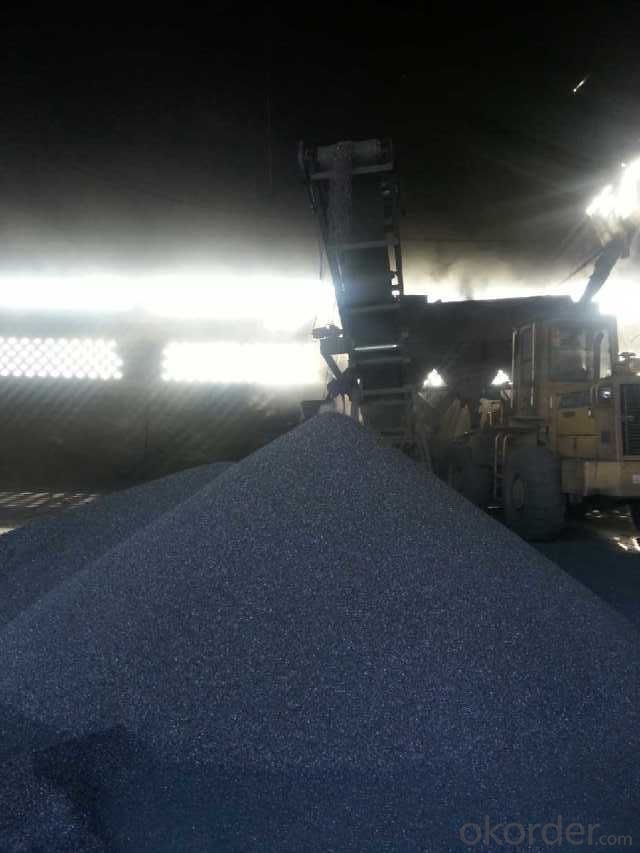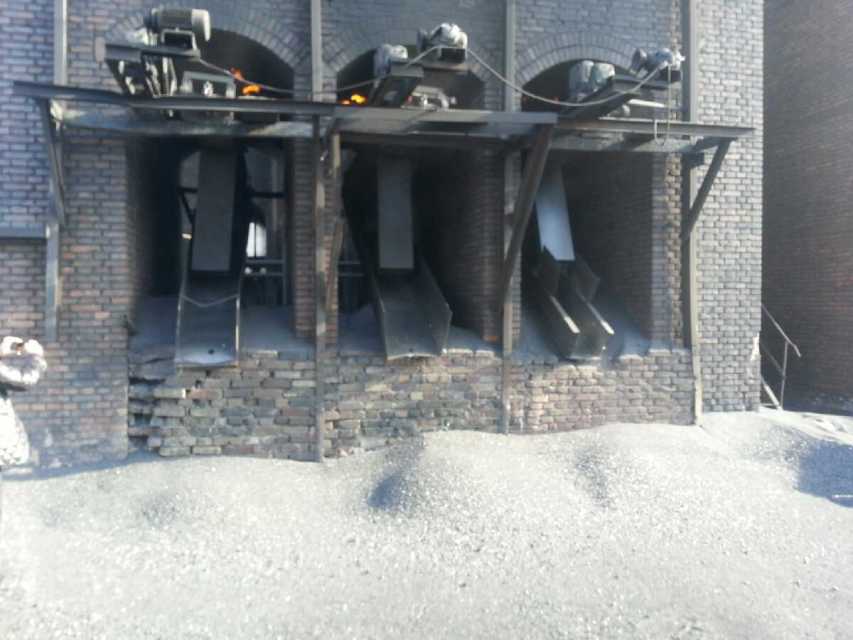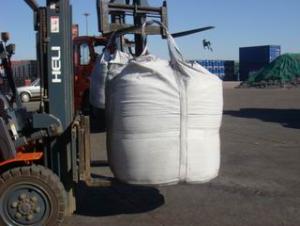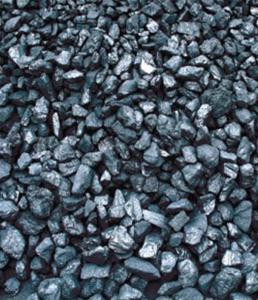Calcined Anthracite Coal FC 92 Reasonable Price
- Loading Port:
- China main port
- Payment Terms:
- TT OR LC
- Min Order Qty:
- 0 m.t.
- Supply Capability:
- 20000 m.t./month
OKorder Service Pledge
Quality Product, Order Online Tracking, Timely Delivery
OKorder Financial Service
Credit Rating, Credit Services, Credit Purchasing
You Might Also Like
Product Description
Calcined Anthracite coal is produced using the best Anthracite-Taixi Anthracite with low S and P, It is widely used in steel making and casting.
Features
Calcined Anthracite Coal
Fixed carbon: 90%-95%
S: 0.5% max
Size: 0-3. 3-5.3-15 or as request
Specification
PARAMETER UNIT GUARANTEE VALUE | |||||
F.C.% | 95MIN | 94MIN | 93MIN | 92MIN | 90MIN |
ASH % | 4MAX | 5MAX | 6MAX | 7MAX | 8MAX |
V.M.% | 1 MAX | 1MAX | 1.5MAX | 1.5MAX | 1.5MAX |
SULFUR % | 0.5MAX | 0.5MAX | 0.5MAX | 0.5MAX | 0.5MAX |
MOISTURE % | 0.5MAX | 0.5MAX | 0.5MAX | 0.5MAX | 0.5MAX |
Size can be adjusted based on buyer's request
Pictures



- Q:How does carbon affect the formation of ground-level ozone?
- Carbon is a key contributor to the formation of ground-level ozone, also known as smog. When carbon-containing pollutants, such as vehicle exhaust and industrial emissions, are released into the atmosphere, they react with sunlight and other pollutants to form ground-level ozone. This reaction occurs more rapidly in the presence of high levels of carbon, leading to increased ozone concentrations.
- Q:What is carbon nanophotonics?
- The study and manipulation of light at the nanoscale using carbon-based materials is known as carbon nanophotonics. This branch of science and technology integrates carbon nanotubes, graphene, and diamond nanoparticles with photonics to develop new optical devices and systems. Carbon-based nanomaterials possess exceptional electrical conductivity, high mechanical strength, and excellent optical properties, making them ideal for nanophotonics applications. These materials can confine and manipulate light at the nanoscale, enabling the miniaturization of optical components and enhancing light-matter interactions. Carbon nanophotonics has vast potential across various fields. Telecommunications, for instance, can benefit from high-speed and compact photonic devices developed using carbon nanomaterials for efficient data transmission. In the field of sensing, highly sensitive and selective sensors can be developed using carbon nanophotonics to detect different molecules and substances. Furthermore, carbon nanomaterials can enhance the efficiency of solar cells and other photovoltaic devices, contributing to advancements in energy harvesting. In summary, carbon nanophotonics is a rapidly evolving field that combines carbon-based nanomaterials with photonics to create innovative optical technologies. By harnessing the power of light at the nanoscale, this field has the potential to revolutionize industries and drive advancements in science and technology.
- Q:How does carbon impact the availability of clean water resources?
- Carbon impacts the availability of clean water resources in several ways. Firstly, the burning of fossil fuels releases carbon dioxide (CO2) into the atmosphere, contributing to climate change. This leads to rising global temperatures, which in turn affect the water cycle. Increased evaporation rates and altered precipitation patterns can result in droughts or excessive rainfall, both of which can disrupt the availability and quality of clean water sources. Additionally, carbon emissions contribute to ocean acidification, which harms marine ecosystems and disrupts the delicate balance of marine biodiversity, ultimately affecting the quality and availability of freshwater resources.
- Q:How does carbon monoxide affect human health?
- Carbon monoxide is a highly toxic gas that can have severe impacts on human health. When inhaled, carbon monoxide enters the bloodstream and binds with hemoglobin, the molecule responsible for carrying oxygen to our cells. This binding is extremely strong and prevents oxygen from being delivered effectively, leading to a condition called carboxyhemoglobinemia. The symptoms of carbon monoxide poisoning can vary depending on the concentration and duration of exposure. Initially, individuals may experience mild symptoms such as headache, fatigue, dizziness, and nausea. However, as exposure continues or at higher concentrations, these symptoms can progress to confusion, impaired judgment, loss of consciousness, and even death. One of the most dangerous aspects of carbon monoxide is its ability to go undetected, as it is colorless, odorless, and tasteless. This makes it challenging to recognize its presence without proper monitoring equipment. Carbon monoxide poisoning can occur from various sources, including faulty heating systems, poorly ventilated appliances, and running engines in enclosed spaces. Prolonged or repeated exposure to carbon monoxide can have long-term health consequences. It can lead to neurological damage, memory loss, cognitive impairment, and even permanent brain damage. Additionally, it can exacerbate existing cardiovascular conditions, increasing the risk of heart attacks and strokes. To protect ourselves from carbon monoxide poisoning, it is crucial to have proper ventilation and functioning carbon monoxide detectors in our homes and workplaces. Regular maintenance of appliances and heating systems is also essential to minimize the risk of leaks. Recognizing the symptoms of carbon monoxide poisoning and seeking immediate medical attention are vital in preventing severe health outcomes.
- Q:What is the role of carbon in the formation of diamonds?
- The role of carbon in the formation of diamonds is crucial as it is the sole element responsible for the creation of these precious gemstones. Diamonds are formed deep within the Earth's mantle, under extreme pressure and temperature conditions. Carbon atoms, when subjected to immense pressure and heat, undergo a process called graphitization, where they rearrange their atomic structure and transform into a crystal lattice arrangement, giving rise to the formation of diamonds. The process starts with carbon-rich materials, such as organic matter or carbon-bearing minerals, being exposed to the intense heat and pressure found deep within the Earth's mantle, typically at depths of around 150 to 200 kilometers. Under these conditions, the carbon atoms within these materials are forced to bond together in a unique way, forming the rigid, three-dimensional lattice structure characteristic of diamonds. The formation of diamonds requires specific geological conditions, including temperatures above 900 degrees Celsius and pressures exceeding 725,000 pounds per square inch (50,000 atmospheres). These extreme conditions are typically found in areas where ancient tectonic plates collide or in volcanic eruptions that bring diamonds to the Earth's surface. Carbon's ability to form strong covalent bonds with other carbon atoms is what allows the transformation into diamonds. Each carbon atom forms four strong covalent bonds, creating a tetrahedral structure. This strong bonding allows diamonds to possess exceptional hardness, making them one of the hardest substances known to man. In summary, carbon plays an essential role in the formation of diamonds, undergoing graphitization under immense pressure and temperature conditions to create the unique crystal lattice structure that gives diamonds their extraordinary properties. Without carbon, the formation of diamonds as we know them would not be possible.
- Q:What is the composition of carbon in stainless steel?
- The quality and performance of steel are determined according to needs, and different elements should be included in different requirements(1) carbon, the higher the carbon content, the higher the hardness, but its plasticity and toughness are worse(2) sulfur is the harmful impurity in steel. The steel with high sulfur content is easy to crack when it is processed by high temperature. It is usually called hot brittleness(3) p; can make the plasticity and toughness of the steel decreased significantly, especially at low temperature is more serious, this phenomenon is called cold brittleness. In high-quality steel, sulfur and phosphorus must be strictly controlled. But on the other hand, sulfur and phosphorus containing high in low carbon steels, can make the cutting easily broken, is benefit to improve the machinability of the steel is.(4) manganese; can improve the strength of steel, can weaken and eliminate the adverse effects of sulfur, and can improve the hardenability of steel, manganese content of high alloy steel (Gao Menggang) has good abrasion resistance and other physical properties.(5) silicon; it can improve the hardness of steel; but the plasticity and toughness decrease; the steel used in the electrician contains a certain amount of silicon, which can improve the soft magnetic properties(6) tungsten can improve the red hardness and heat strength of steel, and can improve the wear resistance of steel
- Q:What are the effects of carbon emissions on agriculture?
- Agriculture is significantly harmed by carbon emissions, with various negative effects. Firstly, the presence of higher levels of carbon dioxide (CO2) in the atmosphere contributes to global warming, resulting in changes in rainfall patterns and more frequent occurrences of extreme weather events like droughts, floods, and heatwaves. These weather conditions disrupt agricultural production by reducing crop yields, damaging crops, and increasing the prevalence of pests and diseases. Higher temperatures also accelerate evaporation, which leads to soil moisture deficits and water scarcity. This has a detrimental impact on crop growth and productivity. Additionally, elevated CO2 levels can modify the nutritional composition of crops, reducing their quality and nutritional value. Research has demonstrated that increased CO2 concentrations can decrease the protein content in wheat and rice, potentially causing health issues for those who heavily rely on these staple crops. Moreover, carbon emissions contribute to the formation of ground-level ozone, a harmful air pollutant. Ozone damages plant cells, inhibits photosynthesis, and reduces crop yields. It particularly affects sensitive crops such as soybeans, wheat, and cotton. The consequences of carbon emissions on agriculture extend beyond crop production. Livestock farming is also affected, as rising temperatures and water scarcity make it more difficult to maintain adequate grazing lands and provide sufficient water and fodder for animals. Furthermore, changes in climate patterns can facilitate the spread of livestock diseases and pests, posing additional risks to the livestock industry. In conclusion, carbon emissions have far-reaching effects on agriculture, resulting in decreased crop yields, diminished nutritional value, challenges in livestock farming, and increased vulnerability to pests, diseases, and extreme weather events. It is crucial to address and mitigate carbon emissions to safeguard global food security and ensure the sustainability of agricultural systems.
- Q:How is carbon used in the production of carbon nanowires?
- Carbon is a key component in the production of carbon nanowires due to its unique properties. Carbon nanowires are typically created through a process called chemical vapor deposition (CVD), which involves the decomposition of a carbon-containing precursor gas in a high-temperature environment. In this process, a carbon source, such as methane or ethylene, is introduced into a reaction chamber. The precursor gas is then heated to a high temperature, typically above 600 degrees Celsius, which causes it to decompose. As a result, carbon atoms are released and start to deposit on a substrate material, such as a silicon wafer or a metal catalyst. The carbon atoms in the precursor gas have a tendency to form strong covalent bonds with each other, leading to the formation of a graphite-like structure. However, by carefully controlling the growth conditions, such as temperature and pressure, the deposited carbon atoms can be made to arrange themselves in a highly ordered manner, forming nanowires. The use of carbon as the building block for nanowires is advantageous due to its exceptional thermal and electrical conductivity, as well as its high mechanical strength. This allows carbon nanowires to exhibit unique properties, making them suitable for various applications, such as in electronics, energy storage, and sensors. Overall, carbon plays a crucial role in the production of carbon nanowires by serving as the raw material that undergoes decomposition and subsequent rearrangement to form the desired nanoscale structures.
- Q:DNF new advanced furnace rock carbon reinforcement +10 50 powder weapons, the upper 11 probability of success is how much, how many advanced furnace rock carbon?
- Specifically, for a random item / skill, there is an initial probability, called C. (for each item / skills are different) for example, roaming learned a 10 crit, so he first attack crit rate is C, if not crit, then the next attack, the system will take the chance to crit increased to 2C, if not a crit, then to improve to 3C... Until a crit, and start all over. The next chance of crit returns to the very beginning of C. (obviously, if has not crit, so after a certain number of attacks on X X*C>1, then this will surely be a crit) this is our game in random, many people may have noticed that some of our props inside the game, such as Tara jewelry sets BUFF probability is 1%, but in fact the BUFF probability is much more than 1%. Many props are like this, such as the title of death, robot necklace...... The odds of a low probability are high. The reason is that everything in the game is pseudo random, and our random values are always superimposed, that is to say, definitely. Strengthening equipment is the reverse, for the first time is 100%, and then multiplied by a C, has been multiplied to the probability of infinity approaching 0...... So the cushion works in theory. Believe to see, understand the players have already understood, want to play high carbon to the biggest use, depend on mat. After understanding this point of view we can count the cost of the 20 high carbon equipment 8 yuan then taking yxb:rmb1:20 as an example, if more than 160W will use cost-effective equipment than carbon somehow expensive ~ here is to provide you a way
- Q:What are the advantages and disadvantages of carbon monoxide and carbon dioxide?
- Using carbon dioxide instead of traditional organic solvents to spray paint can effectively reduce the amount of harmful substances released into the atmosphere during the process of spraying. In the high-tech, carbon dioxide has its use for laser treatment using carbon dioxide instead of helium neon, can reduce the pain of patients, and save the cost for carbon dioxide extraction of egg yolk lecithin, considerable economic benefit. Carbon dioxide can be used to wash clothes, and does not pollute the environment, but also a wide range of sources. These are all benefits. The downside is the increased carbon dioxide caused by the greenhouse effect, resulting in the polar melting glaciers, rising sea levels, threatening the coastal city, the land salinization of coastal areas, increasing the difficulty of development, increasing temperature also makes the melting of snow in some of the top of the hill, the snow melt water resources of river water to reduce or even stop the phenomenon to occur, the affected area production activities. The increase of the atmospheric temperature, resulting in carbon dioxide absorption in some marine algae wantonly breeding, resulting in the death of algae absorb carbon dioxide, indirectly affect the fishery breeding, and the carbon dioxide in the atmosphere increases toward the vicious spiral. Take | enthusiastic users on 2013-11-09 12:52
1. Manufacturer Overview |
|
|---|---|
| Location | |
| Year Established | |
| Annual Output Value | |
| Main Markets | |
| Company Certifications | |
2. Manufacturer Certificates |
|
|---|---|
| a) Certification Name | |
| Range | |
| Reference | |
| Validity Period | |
3. Manufacturer Capability |
|
|---|---|
| a)Trade Capacity | |
| Nearest Port | |
| Export Percentage | |
| No.of Employees in Trade Department | |
| Language Spoken: | |
| b)Factory Information | |
| Factory Size: | |
| No. of Production Lines | |
| Contract Manufacturing | |
| Product Price Range | |
Send your message to us
Calcined Anthracite Coal FC 92 Reasonable Price
- Loading Port:
- China main port
- Payment Terms:
- TT OR LC
- Min Order Qty:
- 0 m.t.
- Supply Capability:
- 20000 m.t./month
OKorder Service Pledge
Quality Product, Order Online Tracking, Timely Delivery
OKorder Financial Service
Credit Rating, Credit Services, Credit Purchasing
Similar products
New products
Hot products
Hot Searches





























